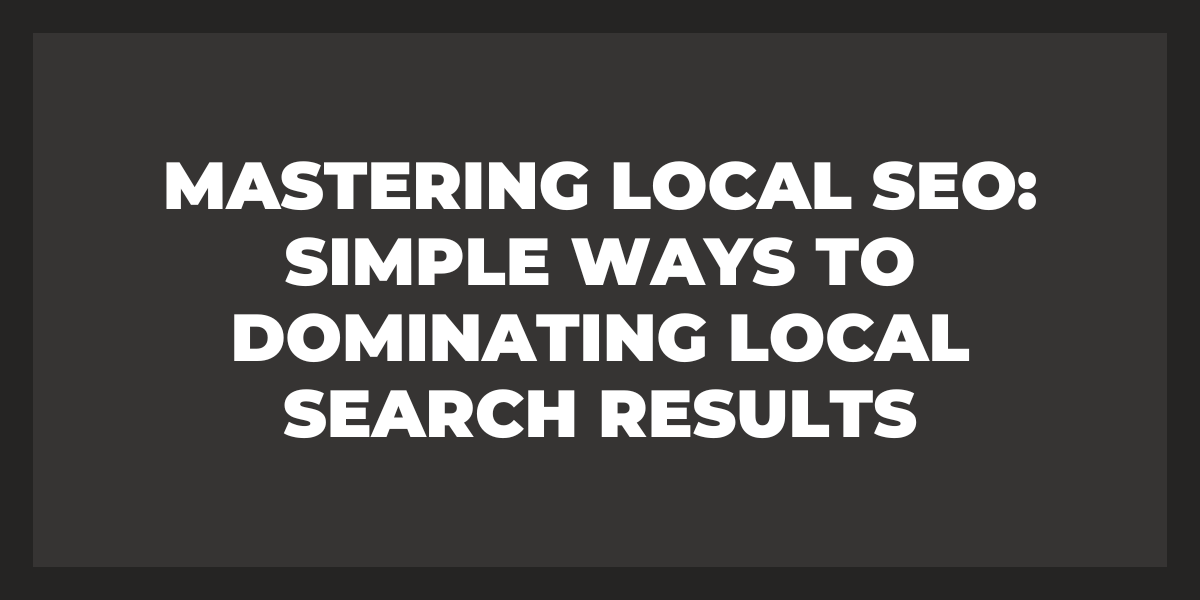For digital agencies, creating SEO Reports for clients is essential. Your customers need to recognize the tangible advantages that your services bring and how they can advance their business. For instance, by tracking search engine optimization (SEO) performance week-by-week or month-by-month, it becomes crystal clear whether organic traffic growth and rankings are improving over time or not. The more traffic produced equates with added leads resulting in higher sales numbers as well as conversions. In other words, the work you provide has a real possibility of completely changing your client’s company for the better!
SEO Reports are pivotal for retaining customer loyalty. With thoughtful reports, you can create trust and bolster your reputation with clients. Rather than being a mere service provider, strive to be seen as a reliable partner who is invested in their success. Quality reporting plays an essential role in deepening client relationships and strengthening them over time.
Is it possible to create the ideal SEO Report for clients and customers?
Certainly. For that, several must-have components should be integrated. However, merely having these elements is just one aspect of the task. Equally important is presenting and categorizing which SEO information has a high value in achieving a desired outcome based on each customer’s business objectives and existing conditions. It all comes down to understanding context!
Fundamental SEO Report Sections
There are seven fundamental SEO report concepts that are mandatory for making the perfect reports:
1. Report Branding and layout
Never underestimate the power of presentation when it comes to your SEO Report . Your client’s interpretation of what you’ve written depends heavily on how your report looks, so make sure that it is in line with your agency brand; logo, colors and fonts should all be consistent. Structure the layout depending on whether or not you’re emailing or delivering a physical copy – if you are doing the former, it must be scannable with descriptive headings which state facts clearly (for example “Organic Traffic increased 56% this Month” rather than simply “Organic Traffic Summary this Month= +56%”). For a professional look, consider using an SEO Report presentation template.
Ensure that your client comprehends the report quickly by designing visuals, like charts and graphs, that are easily understandable within seconds. The classic “up and to the right” chart is a universal symbol of success – it conveys the message immediately so they don’t have time for confusion. Of course, when great data visualization accompanies this metaphorically powerful image, there’s no stopping how effective your report can be!
If you’re presenting the report in person or through a live video, descriptive titles become less relevant as your client will be more focused on what you are saying. Make sure that your visuals illustrate and support whatever point of discussion you bring up to keep them engaged and understanding how it pertains directly to their business objectives (i.e., sales, leads, conversions). Utilize charts and graphs – which will remain longer on screen – over text details. Explain clearly what they mean so that clients can benefit from data-driven decision-making. Additionally, incorporating the ability to embed video in Google Slides can enhance your presentations and training materials, making them more engaging and informative for your clients and team members.
2. Executive Summary
The Executive Summary is the most critical page of the report. It should be concise and to-the-point, delivering a comprehensive summary on how SEO performance aligns with the client’s business objectives. If this single page is read, it will have served its purpose – so make sure not to clutter it up!
Your Executive Summary should prioritize the metrics that are most relevant to your client. If you’re uncertain about which ones those might be, don’t hesitate to inquire! And if need be, take some time with your client in order to decide on certain points together. In addition, include a brief overview of conducted activities and report back successful results as well as any changes or shifts for the following month depending upon gathered insights. Some or all of these items can also be allotted their own separate sections too; regardless though, this summary carries one main purpose: show ROI (Return on Investment) results effectively and accurately to clients.
3. SEO Metrics Dashboard
The Metrics Dashboard is an invaluable one-stop view of all the objectives and associated metrics, as well as comparisons to a previous time period. This comprehensive outlook includes charts, graphs, numbers, and sums that are easily understood through visuals; essentially if you can spot trajectories going up & right then you know everything’s in ideal condition!
Utilize red/green arrows to articulate the data at a metric level, and utilize callout bubbles to direct attention to essential points of focus on your page. Additionally, it is an excellent suggestion to deploy a scoring system like A-F or 0-100 grades in order to summarize each report’s performance. This periodic review will enable you gain further insight into your progress!
4. Traffic & Conversion trends
To ascertain the effectiveness of your hard work, review organic queries and impressions using Google Search Console as well as observe traffic and conversion trends through segmenting organic traffic in Google Analytics. Such metrics are paramount for attaining customer objectives since they manifestly reflect the results of all your effort.
5. Keyword Rankings
Make sure to set up your client’s target keywords in the Keyword Tool as soon as you start working with them, so that SEOptimer will have their ranking evolution history. Plus, monitoring keyword rankings over time is super simple! You can see estimated search volume and competition for each keyword too. Nothing compares to sharing the moment a specific keyword reaches position 1 with your client – especially when shared within the context of an impressive report like this! It’ll help strengthen customer loyalty while demonstrating how successful they are due to your efforts.
6. Backlinks
Present a list of backlinks attained and the ones which were lost. If creating backlinks and blogger/publisher outreach are part of your SEO services – this section is crucial for demonstrating the value of what you do. Verify that new backlinks have led to increased search rankings or an upsurge in organic website traffic.
7. Insights & Recommendations
The concluding part of the SEO report should include your personal takeaways from the data, as well as practical recommendations. Generally speaking, companies tend to use a “START, STOP and CONTINUE” summary in order to determine new approaches that they’ll start implementing, what activities will be halted and which ones need to keep going – all based on relevant indicators.
Agency Report Branding
To ensure your agency’s brand remains prominent, you should white label all of your reports—not just those related to SEO. Furthermore, ensure that logos, fonts, colors and styles are consistent with the identity of your business. Additionally, if you decide to share links instead of PDFs for SEO documents make sure the URL, browser Favicon and page title have been whitelabeled too!
Crafting a unified and cohesive experience across all of your agency’s digital resources not only portrays professionalism, but also demonstrates to the client that you value attention to detail.
Customizing SEO Reports for client preferences
When creating SEO reports for customers, having a variety of report formats is essential to best meet their needs. Your client’s industry, business stage and objectives should be taken into consideration when deciding on the content and layout. Additionally, subjective variables such as degree of expertise, existing relationship with your company and design preferences also come in play while crafting the perfect report tailored to each individual customer.
Depending on their approach, some customers prefer to read a quick summary of the results while others might be more interested in studying your reports comprehensive and scrutinizing all details. Understanding this discrepancy is paramount for crafting successful reports that satisfy their individual needs! By optimizing for both types of clients beforehand, you maximize the chances of success with each report.
Report Delivery Format
Aside from the content of your report, there are several delivery formats that you can consider for optimal success.
- Acrobat PDFs are undoubtedly the most popular report format and for a good cause. Not only do they make sharing effortless, but these files can be opened on any device with ease, all while taking up minimal bytes of space!
- Live Link offers users a cutting-edge advantage; you can access interactive reports displayed in your browser, usually as a Dashboard. This revolutionary feature allows customers to input filters and obtain the data they need right away!
- Rather than utilizing attachments or links, it is best to keep the report in the body of your email concise and straightforward. That way, you can guarantee that your message will be received quickly and clearly by all recipients.
- Zoom/screensharing reports is a common way for agencies to deliver their findings, but be sure that you also request the PDF version of the report as well. If screensharing via Zoom, it’s best to use an interactive presentation tool like PowerPoint or Slides so viewers can better engage with and understand your data points.
Report Length
The level of detail you go into on your reports is determined by their length. To ensure that all client expectations are met, present them with a standard report template to begin with. Asking for feedback and making notes about the features they like or don’t will enable you to make any changes needed so that the final product is exactly what they envisioned.
Stakeholders
Prior to beginning your report, make sure to ascertain what the client plans on doing with it. Do they need to forward it off or share it with other members of their team? If so, familiarize yourself with any expectations these people may have for the content present in the report; this is an incredibly common occurrence. To avoid unnecessary complications down the line, identify all stakeholders and work towards meeting their individual needs – especially if one or more are higher up within an organization.
By sending multiple report versions (e.g., for the CMO and Digital Marketing Manager), you can save yourself time, effort, and resources.
Customizing SEO Reports for different contexts
As you create your SEO reports, always bear in mind that they should demonstrate the return of investment on your SEO efforts. To serve this purpose effectively though, it is important to customize the layout and content according to different contexts:
Client monthly/quarterly review
This regular report process is typically referred to as “business as usual” (BAU). Depending on the situation, this can be done monthly, every two weeks or quarterly. Generally speaking, the format for each of these reports remains mostly unchanged. In order to ensure that clients are actually opening and reading your reports, it is advisable you track them – if they aren’t doing so, it could indicate a possible risk of churning in the near future.
Expanding client account
Regular reporting offers a great opportunity to demonstrate potential expansion opportunities in an account. For instance, you could use it to make the case for supplementing organic search traffic with paid search campaigns. By assessing keyword costs and competition levels, you can even provide speculative strategies at the end of your report that are worth testing out over time. Doing this will give you invaluable insights into how these tactics perform against each other – unlocking further growth potential!
Preventing client churn
Client churn can be attributed to a variety of reasons, but two primary culprits are nearing the end of an expiring contract and change in personnel on the client side. When these two conditions exist, it’s ideal to take advantage by using monthly reporting as a tool for identifying market opportunities that require additional effort to maximize potential profits. Therefore, if either of these scenarios is looming close-by, consider taking proactive measures now!
This task would have its own timeline that surpasses the service contract expiration date. When value is being experienced on two individual projects, you can use this as evidence to justify extending your original agreement.
Winning back churned clients
While it’s not necessary to send monthly reports, there is a great benefit in monitoring the SEO performance of customers who have churned 6 and 12 months after they left. If any new issues arise or you detect decreases in their search rankings, this can be an ideal opportunity to reconnect with them and show off your excellence by addressing these matters proactively.
New business SEO report
Generally, the time between an initial meeting with a client and their final decision can be lengthy – sometimes even lasting for months. In these situations, it is wise to use that period of time as an opportunity to demonstrate your agency’s value by providing monthly reports on potential issues or opportunities. This proactive approach may give you an edge if there are multiple bidders vying for the same work and particularly when the client has no internal urgency in making a quick choice.
Automate your Client SEO Reports
You may be concerned that creating these countless reports will take an eternity, but worry no more. Tools like SEOptimer have your back. With its White Label SEO Audit Reports, you can easily generate multiple templates and control the amount of detail in each. Then, put your reporting on autopilot while you relax. Your white-labeled reports are downloadable as a PDF file ready for clients plus come with raw data available to download in CSV format too.
Frequently Asked Questions
- What information should be included in SEO reports for clients?
SEO reports include an overview of your website’s performance, including data on organic traffic, keyword rankings, backlinks, and technical SEO issues.
- How frequently should the SEO report be generated?
You can opt for both monthly and quarterly SEO reports, depending on your needs and preferences.
- Can I customize the information included in the SEO report?
Yes, you can customize the content of the SEO report to focus on specific metrics or areas of concern for your business.
- How will the SEO report be delivered?
Ideally, most organizations prefer that the SEO report be delivered as a PDF document via email.
- How can I view historical data in the SEO report?
Most SEO reports include a comparison to the previous period, allowing you to track your progress over time.
- Can I see data on specific keywords or pages in the SEO report?
Yes, you can include data on specific keywords or pages in the SEO report upon request.
- How can I use the data in the SEO report to improve my website’s performance?
The data in the SEO report can be used to identify areas for improvement on your website, such as low-performing pages, loading times or other technical issues.
- Can I see data on my competitors in the SEO report?
Absolutely, some SEO tools can include data on your competitors in the SEO report upon request.
- Will the SEO report include recommendations for improving my website’s performance?
Yes, some SEO reporting tools include recommendations for improving your website’s performance based on the data analyzed.




















